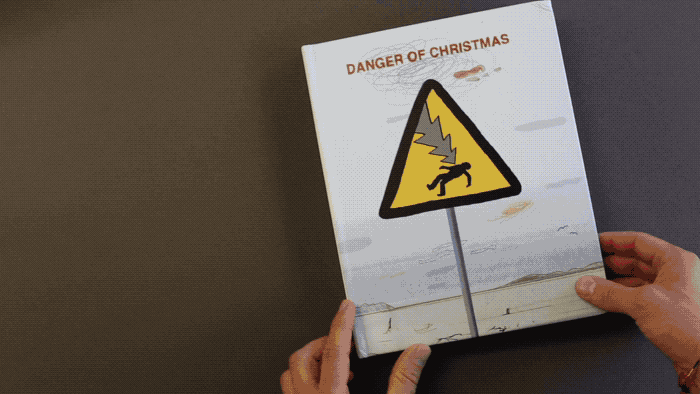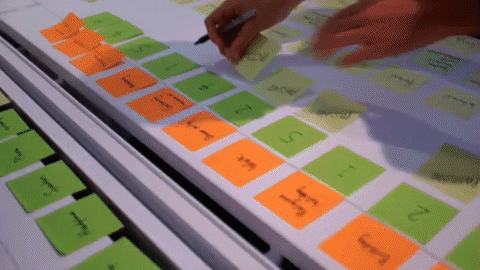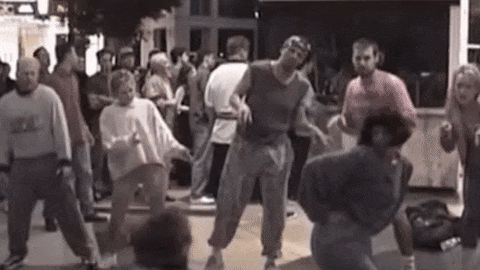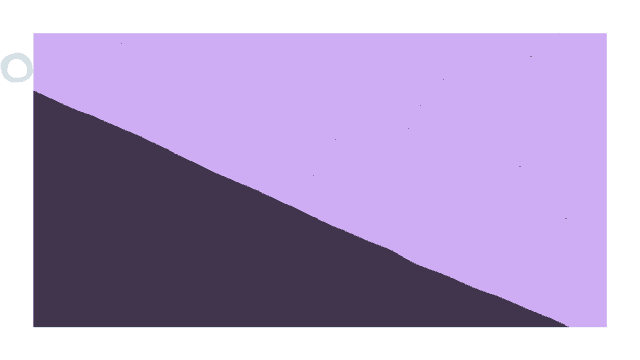The evolution of client storytelling

This sounds like a grandiose claim but we’ve never lived in a more ‘visual’ way than we do now. Apps like Instagram, Snapchat and Facebook have completely changed the way we communicate with each other. Whether it’s videos, stories or gifs, we have access to almost anything we want to see, when we want. We’ve mastered the format of short form content due to our shorter attention span, forcing us to be more direct and impactful with what we share. And as smartphones continue to come down in price, we enter a new era of storytellers.
Then there’s work… for far too long we’ve had to sit through too many uninspiring, epicly long presentations. Slide after slide after slide of text and diagrams. These two worlds couldn’t be further apart. So why do people find it so hard to talk about the things they’re working on? Surely the less enthusiasm you have for telling the story of your product the less enthusiasm your client has for the thing you’re building, and that they’re paying for.

Building a culture of storytellers at the workplace
Documenting projects has always been part of our fabric at Made by Many. We make sure to take photos and videos of every aspect of our projects. They’re a great way to tell stories that are sometimes hard to articulate in a deck. But documenting and storytelling aren’t the same thing. Documentation is simply recording. Storytelling is the way you craft the things you recorded into a narrative.
Our client books are a great example of storytelling. Every year at Christmas we make a book for each of our clients celebrating the story of the work we’ve done together. The books tell a story of what we did and how we did it, from start to finish. They’re a collage of photos, sketches and diagrams that show how our thinking and making have evolved over the course of our time together. It’s a feat in itself to create the books but the reward makes it worthwhile.

This got me thinking: why wait for this moment once a year? How can we create more WOW moments throughout our projects? How can we deliver more impact with the presentations we deliver every week?
The answer is simple. We’ve messed around with lots of different storytelling methods, but none has been as effective as video.
If a picture’s worth a thousand words, a video’s worth a million pictures
Video stirs our passions, kindles our rage and warms our hearts. Nothing hits an emotional spot as much. And from a practical perspective, it brings our users, our processes, our insights and our strategies right into the room for everyone to see.
Teach what you preach

Everyone is scared by the unexpected and the uncertain, and this is often the state of a client’s mind at the start of a project when they’re are faced with a significant problem to solve, and are being asked to work in new ways. Video is a great way of breaking down this barrier and helping them to get to grips with the processes that we use to build successful products.
You should never wait for the ‘ta-da’ moment at the end of your project. That’s too late. Storytelling is as much about the journey and how you got there as it is the final thing. It’s often hard to keep stakeholders who haven’t been involved in the day-to-day informed about progress, and we’ve found that video can be a way more powerful tool than a traditional deck when communicating your creative process. This isn’t necessarily about completely replacing a deck — it’s about giving context to how we do things and why we do it this way.
Praise you like I should

Video isn’t just a great way to bring process to life. It’s also a great way to praise the work and effort of the team. And by ‘team’ I mean recognising the work and achievements by you, your client and your customers, it’s a collaborative celebration.
I often think we don’t stop to recognise the effort that goes into building products, especially with our clients who are adopting methods and tools that they’ve never used before.
So with all that documenting you do, spend an hour or two stitching the best (and worst) moments into an X-Factor-esque montage. It’s so easy to do and brings some joy and levity to your sprint review or demo. Celebrate more.
Reach a bigger audience

When it comes to sharing a presentation you’ve given, it’s much easier to control the narrative of a video than it is a deck. You can set the pace, dictate timing, play sound and combine it with commentary. It gives you the freedom to be as impactful as you want.
Video is the best way to create simple shareable objects for large groups of people. You can easily make a video that’s two minutes long that tells an impactful story. Compare that to a PDF that might take 40 mins to read. A CEO or senior stakeholder who hasn’t got bags of time is much more likely to watch two minutes of engaging content than scroll (or skip) through a 100 slide PDF.
Changing opinions

In the past, we’ve presented quotes alongside insights and we’ve found this to be an effective way of giving some context to the insights we extract from our research.
But the more we experimented with video the more it highlighted some weaknesses with this written format:
- You lose context in which it was spoken
- It’s time consuming to extract quotes from audio recordings or written notes
- They’re often translated
Whereas with video:
- You get your point across much more quickly
- It helps the client build empathy with their customers
- Quotes are way more effective coming from the customers’ mouths than ours
However, this comes with a big BUT. Video is much more powerful and convincing, so with great power comes great responsibility. You have to be careful to show both sides of the story and not just select what you want to show. As a storyteller in our business it’s vital that we’re telling the whole story — not just ours or our clients. This same responsibility applies for traditional methods. Skewing research can potentially destroy the product.
I’m not claiming that we’ve invented some new kind of storytelling format. We haven’t. It’s been around longer than I’ve been alive, but is so often overlooked.
There’s no better feel good moment than seeing all the team’s hard work wrapped up in a super punchy two-minute video. That artefact is an encapsulation of everything you’ve achieved together. On more than one occasion it’s even brought a tear to our client’s eye, which makes me proud of what I and everyone at Made by Many do. Storytelling shouldn’t be one person’s role — it should be part of your culture.
Finally, I’d love to share some of the videos we’ve created but due to the nature of our work and the sensitivity of our clients’ projects I can’t at the moment. However, I’ll follow this up with a tutorial about how to create some similar videos in due course.
Continue reading
Breaking bubbles and building skills
Now more than ever, as we create the next generation of products and services that are lasting longer, reaching wider and impacting more lives - we need t...


